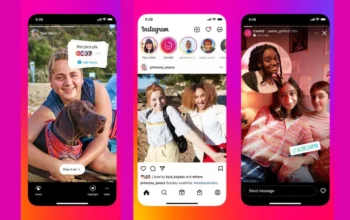Introduction
The way we communicate with one another has undergone a revolutionary transformation over the centuries. From ancient methods of sending messages through messengers on foot to the advent of modern instant messaging platforms, the evolution of communication has shaped human interaction in profound ways. This article delves into the history and development of messengers, exploring how this vital means of communication has evolved from simple methods to the sophisticated and interconnected digital platforms we use today.
I. Ancient Messengers: Pigeons and Runners
Before the era of technological advancements, human civilization relied on various means to convey messages across long distances. One of the earliest and most famous methods was the use of homing pigeons, dating back to ancient times. These birds were trained to carry messages from one location to another, often used in military and political contexts.
Additionally, messengers on foot played a significant role in ancient civilizations, running tirelessly to deliver messages between cities and empires. The efficiency of these messengers played a pivotal role in the success of various historical events, such as the Persian Empire’s extensive postal system under Cyrus the Great.
II. The Postal System and the Pony Express
The establishment of organized postal systems in various ancient empires paved the way for more structured and efficient messaging services. The Roman Empire, for instance, created an extensive network of roads and stations that facilitated the delivery of messages throughout their vast territory.
In more recent history, the Pony Express, established in the mid-19th century in the United States, exemplified the spirit of adventure and determination in the face of challenges. Using a relay system of riders on horseback, the Pony Express reduced the time it took for messages to cross the country, revolutionizing communication during that era.
III. The Telegraph: A Milestone in Communication
The invention of the telegraph in the early 19th century represented a monumental leap in long-distance communication. Developed by Samuel Morse, the telegraph utilized electric signals to transmit coded messages over wires, significantly increasing the speed and accuracy of communication. The telegraph had a profound impact on global affairs, enabling instant messaging across continents and changing the face of warfare, diplomacy, and commerce.
IV. The Telephone: Speaking Across the Miles
The invention of the telephone by Alexander Graham Bell in 1876 marked another groundbreaking moment in communication history. The telephone allowed people to speak directly to each other across vast distances, eliminating the need for written messages. The telephone’s widespread adoption fundamentally changed the way societies interacted, forging connections that transcended geographical barriers.
V. The Age of the Internet and Email
The 20th century witnessed the emergence of the internet, a technology that would forever alter how we communicate. With the rise of email, individuals could send written messages electronically, dramatically reducing the time it took for information to travel across the globe. Email revolutionized business communication and personal interactions, becoming an indispensable tool in daily life.
VI. The Rise of Instant Messaging
As the internet continued to evolve, so did the methods of communication. Instant messaging (IM) platforms emerged in the late 1990s and early 2000s, enabling real-time text-based conversations between users. These platforms, such as ICQ, AOL Instant Messenger (AIM), and Yahoo Messenger, quickly gained popularity among younger generations, revolutionizing how people socialized and connected with friends and family.
VII. The Smartphone Era and Mobile Messaging Apps
The advent of smartphones in the late 2000s ushered in a new era of messaging. Mobile messaging apps like WhatsApp, Facebook Messenger, WeChat, and Telegram allowed users to exchange not only text messages but also multimedia files, voice messages, and even conduct video calls. The widespread adoption of smartphones and mobile messaging apps led to a global communication revolution, making it easier for people to stay connected regardless of location.
VIII. Integration of Social Media and Messaging
The line between social media and messaging platforms began to blur as platforms like Facebook, Instagram, and Snapchat integrated messaging features directly into their applications. Users could now communicate with friends while simultaneously sharing updates, photos, and videos. This integration further expanded the reach and impact of messaging, solidifying its position as an integral part of modern communication.
IX. Messaging in the Workplace: Slack and Microsoft Teams
The evolution of messaging also revolutionized workplace communication. Slack and Microsoft Teams emerged as prominent workplace messaging platforms, enabling teams to collaborate, share files, and streamline communication in real-time. These platforms redefined how businesses operated, fostering productivity and efficiency in a fast-paced digital world.
X. Security and Privacy Concerns
As messaging platforms continued to grow in popularity, concerns over privacy and security emerged. Several instances of data breaches, hacking, and misuse of personal information raised awareness about the importance of safeguarding user data and maintaining privacy. Companies responded by implementing enhanced security measures to protect their users’ information.
Conclusion
From the ancient messengers carrying pigeons and foot runners to the modern digital age of instant messaging, the evolution of messengers has shaped human interaction in countless ways. The advancement of technology has facilitated communication across vast distances and transcended cultural and geographical barriers. As we look to the future, the integration of AI, video calling, and other technological advancements will undoubtedly continue to redefine how we connect with one another, further solidifying messaging as an indispensable part of human communication.






